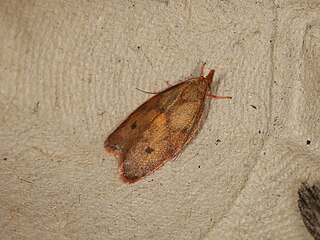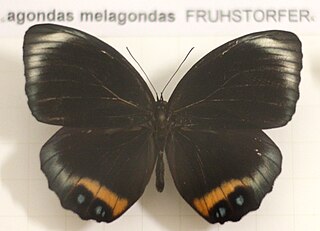
Rossia glaucopis is a species of bobtail squid native to the southeastern Pacific Ocean, specifically the waters around Chile.

Rossiinae is a subfamily of bobtail squid encompassing four genera and around twenty species, two of which require further verification.

Woodnymphs are hummingbirds in the genus Thalurania. Males are green and violet-blue, while females are green with white-tipped tails and at least partially whitish underparts. Both sexes have an almost straight, entirely black bill and little or no white post-ocular spot. They are found in forest and tall second growth. The species in this genus are almost entirely allo- or parapatric, and a species is present virtually everywhere in the tropical humid Neotropics.

The violet-capped woodnymph is a species of hummingbird in the "emeralds", tribe Trochilini of subfamily Trochilinae. It is found in Argentina, Brazil, Paraguay, and Uruguay.

Tabanus glaucopis, also known as the downland horsefly, is a species of biting horse-fly.

Erebus is a genus of moths in the family Erebidae.

Telioneura is a genus of moths in the subfamily Arctiinae. The genus was described by Felder in 1874.

Tautobriga is a genus of moths in the family Erebidae. The genus was erected by Francis Walker in 1869.

Euriphene is a butterfly genus in the subfamily Limenitidinae. The 70 or so member species are confined to the Afrotropical realm. They are found mainly in the Guinean Forests of West Africa and the Congolian forests.
Euriphene glaucopis, the cobalt nymph, is a butterfly in the family Nymphalidae. It is found in southeastern Nigeria, Cameroon, Gabon, the Republic of the Congo, and the western part of the Democratic Republic of the Congo. Its habitat consists of forests.

Telioneura glaucopis is a moth in the subfamily Arctiinae. It was described by Felder in 1869. It is found in the Amazon region.
Erebus glaucopis, the Himalayan blue owl-moth is a moth of the family Erebidae. It is found in Bangladesh, the north-western Himalayas, China, Nepal and Thailand.

Enchocrates is a genus of moths of the family Oecophoridae.

Argyrogrammana is a butterfly genus in the family Riodinidae. They are resident in the Neotropics.
Enchocrates glaucopis is a moth in the family Depressariidae. It was described by Edward Meyrick in 1883. It is found in Australia, where it has been recorded from the south-east of the country.

Elymnias agondas, the palmfly, is a butterfly in the family Nymphalidae. It was described by Jean Baptiste Boisduval in 1832. It is endemic to New Guinea and neighbouring Cape York in the Australasian realm.
Meniscus is a Gram-negative, heterotrophic and aerotolerant genus of bacteria from the family of Prolixibacteraceae with one known species.

Pidorus is a genus of moths belonging to the family Zygaenidae.
This page is based on this
Wikipedia article Text is available under the
CC BY-SA 4.0 license; additional terms may apply.
Images, videos and audio are available under their respective licenses.













